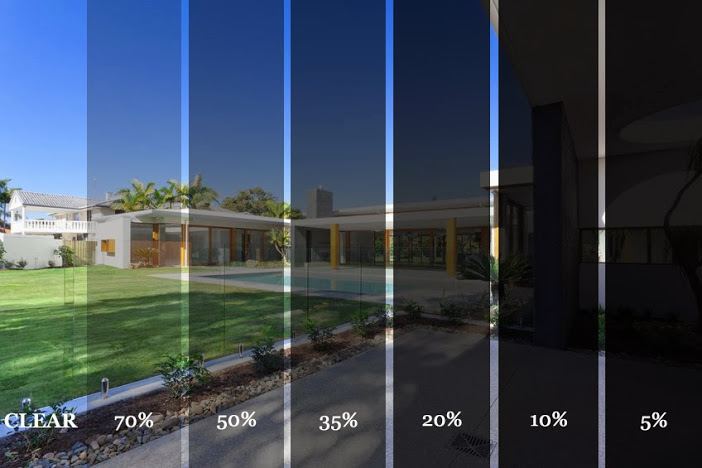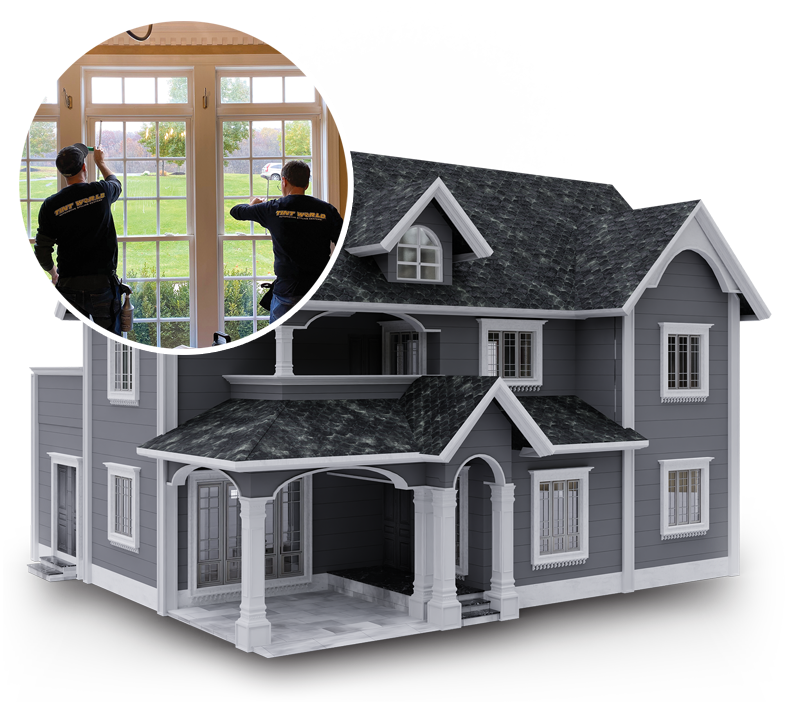Residential Window Tint: Keep Your Home Comfy Year-Round
Residential Window Tint: Keep Your Home Comfy Year-Round
Blog Article
Just How Residential Home Window Tinting Enhances Your Home's Energy Efficiency
Residential window tinting provides a compelling remedy for home owners looking for to boost power performance within their living spaces. By applying specialized movies to windows, it successfully decreases heat transfer, thus stabilizing indoor temperature levels and minimizing the need for too much heating or air conditioning.
Understanding Window Tinting
Comprehending home window tinting is important for house owners looking for to boost both convenience and power efficiency in their living areas. Residential Window Tint. Window tinting includes the application of a slim movie to the interior or outside surface of glass home windows. This film can significantly modulate the amount of sunlight and warm that enters a home, thus affecting indoor climate problems
There are various types of window tinting films offered, each with distinctive properties. The effectiveness of window tinting is commonly determined by its Visible Light Transmission (VLT) percentage, which shows exactly how much light can pass via the film.
Benefits of Power Efficiency
Window tinting not just improves aesthetic appeals but likewise plays a considerable function in enhancing power efficiency within residential areas. By lowering heat transfer via home windows, tinted movies produce an extra secure interior environment, which can result in considerable decreases in power usage for heating and air conditioning. This power performance equates into lower utility expenses, providing home owners with significant long-lasting financial savings.

In addition, window tinting improves the convenience of living rooms. By minimizing glow and obstructing hazardous UV rays, colored home windows produce an even more pleasurable setting, which can lead to boosted well-being for passengers. The security versus UV rays also helps preserve furnishings and floor covering from fading, adding to the durability of household products.
Just How Tinting Functions
Tinting films run with a combination of innovative materials and innovations created to manage the quantity of solar power entering a home. Mostly made up of polyester, these films frequently integrate metal or ceramic fragments that absorb and reflect warmth. This dual capability allows them to considerably minimize the infiltration of ultraviolet (UV) rays and infrared radiation while permitting visible light to travel through.
The performance of home window tinting is determined by its solar warm gain coefficient (SHGC), which shows just how much solar power is transmitted through the window. Reduced SHGC worths are preferable as they signify better warm rejection. Furthermore, window tints can feature a variety of tones, permitting house owners to tailor their aesthetic choices while improving power efficiency.
Additionally, these movies function as a barrier, protecting against warm loss throughout chillier months by reflecting interior heat back into the space. This thermal insulation effect complements the cooling advantages gotten throughout warmer months, contributing to a balanced interior environment year-round. By handling solar power efficiently, household home window tinting not only improves comfort but also plays an essential function in decreasing power intake and lowering utility expenses.
Selecting the Right Color

There are various sorts of window films available, including dyed, metalized, and ceramic. Dyed films are cost-efficient yet may have limited sturdiness. Metalized movies use far better warmth denial yet can disrupt electronic signals. Ceramic films provide excellent warmth control without endangering visibility and are highly sturdy, making them a preferred option.
Visible light transmission (VLT) is another crucial aspect, as it shows the amount of all-natural light that can travel through the tinted glass. House owners need to pick a tint with a VLT that complements their lights preferences while still offering appropriate glow reduction.
Additionally, assessing the solar heat gain coefficient (SHGC) can aid figure out exactly how well a color can block warmth from sunshine. A lower SHGC shows better heat control, eventually boosting power effectiveness.
Installment and Maintenance Tips
Proper installment and maintenance are crucial components in taking full advantage of the advantages of property window tinting. Experts additionally use specialized devices and strategies, which can improve the durability and performance of the tint.
Adhering to installment, maintenance is vital to prolong the life of the home window film. It is advised to wait at the very least 30 view website days prior to cleaning up the tinted home windows to permit the adhesive to cure fully.
Furthermore, normal evaluations are valuable. Look for any peeling or bubbling, which might suggest incorrect setup or use gradually - Residential Window Tint. Attending to these problems without delay can avoid additional damages and keep power performance. By adhering to these setup and upkeep ideas, house owners can ensure their window tinting remains to supply considerable power savings and convenience more for many years to come.
Final Thought
In verdict, household window tinting serves as an effective solution for improving energy effectiveness within homes. By reducing warm transfer and obstructing dangerous UV rays, home window films contribute to decrease energy intake and enhanced indoor comfort.
Home window tinting includes the application of a thin movie to the interior or exterior surface area of glass home windows. By reducing heat transfer via windows, colored films create an extra steady interior environment, which can lead to significant decreases in power usage for home heating and air conditioning.The performance of window tinting is measured by its solar warmth gain coefficient (SHGC), which indicates just how much solar power is sent via the window. By taking care of solar power efficiently, residential home window tinting not only enhances convenience but additionally plays an important function in lowering energy consumption and decreasing energy bills.
By reducing warmth transfer and blocking harmful UV rays, window films add to reduce energy consumption and improved indoor comfort.
Report this page